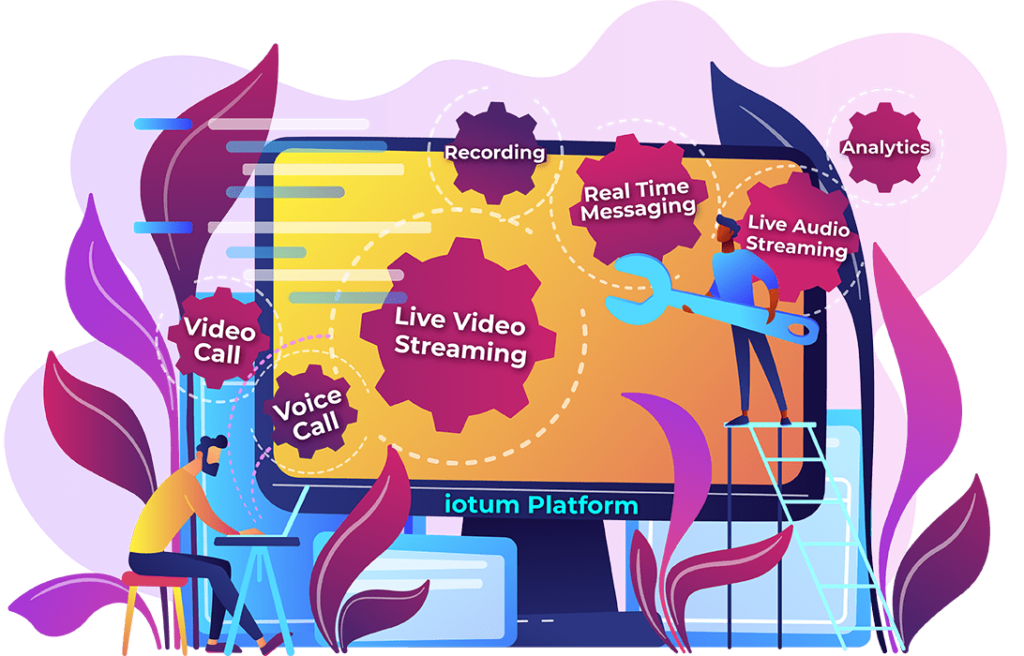Online support groups might sound a little “new age” for those who aren’t initiated into the virtual world. Let it be known, however, that even in a digital environment, an online support group can provide the valuable group dynamic, emotional reinforcement, and first-hand health information hard to come by otherwise. Especially as we move forward navigating a new normal, an online approach that creates a safe space to speak out and connect with others on the same journey can be a truly healing process.
might sound a little “new age” for those who aren’t initiated into the virtual world. Let it be known, however, that even in a digital environment, an online support group can provide the valuable group dynamic, emotional reinforcement, and first-hand health information hard to come by otherwise. Especially as we move forward navigating a new normal, an online approach that creates a safe space to speak out and connect with others on the same journey can be a truly healing process.
Online Support Group Definition:
A “coming together” of people online typically in a nonprofessional setting (but can be led by a professional), to express their personal experience regarding a troubling life situation or circumstance. Participants can share strategies and information while providing a listening ear or proverbial shoulder. It is a safe space of belonging, free from judgment or criticism, and instead, provides a space to build community as a place to see and be seen and heard.
Using video conferencing technology, participants can connect virtually as a group and or break off into smaller groups. Participants engage with others by utilizing communication features such as speaker spotlight, gallery view, and moderator controls for a smooth session that empowers connection and facilitates a nurturing environment.
New to the idea? Want to learn more or looking to weigh the pros and cons? Read on for some more info about online support group goals and objectives and why joining an online support group benefits those experiencing life challenges.
Structure of Support Groups
 Once led mostly in person, nowadays, online support groups occupy an online space with the option to meet face to face. Other common formats include teleconferences, group sessions, online communities, and a combination of both online and face-to-face exchanges.
Once led mostly in person, nowadays, online support groups occupy an online space with the option to meet face to face. Other common formats include teleconferences, group sessions, online communities, and a combination of both online and face-to-face exchanges.
An online support group can take on many forms. One thing to distinguish upfront is that a support group, while “therapeutic,” is not therapy. For many, it offers a “cushion” between appointments with professionals, offering emotional support and providing a wider perspective into the lives of other people with shared experiences. Support groups don’t offer treatment nor are they similar to group therapy led by a licensed health care provider.
Online support groups are generally self-led but can also be offered through an organization, clinic, hospital, or community center. Depending on the desired outcome of the group, a group leader can be a nurse or qualified facilitator, but can also be a person who has been able to overcome their condition or shine a light on recovery.
The Strengths And Limitations Of Online Support Groups
So, why are support groups effective? They provide an opportunity to unite people experiencing the same disease, form of trauma, or condition a way to find refuge and similarity instead of feeling pain and “otherizing.” Especially in an online space, this is a unique way to include people from all over the globe of all backgrounds and experiences to create a dynamic feeling of belonging.
Bringing together members of a support group allows them to open up about their feelings, concerns, stories, treatments, and side effects. Everyone can understand each other when all attendees are going through the same emotions and experiences.
With such technological advances available at our fingertips, online support groups have been able to exponentially become more healing, inclusive, and available with video conferencing capabilities.
Strengths of an online support group include:
- Group Connection
Technology offers an instant connection to others regardless of time and location. Staying in touch via text chat, planning the next discussion, and preparing or researching information for a presentation or a “share,” instills a sense of purpose while strengthening the community. - Enhancing Healthier Coping Mechanisms
This is a chance to connect online with others during difficult moments to express and share instead of resorting to less than ideal coping mechanisms. Replacing unhealthy outlets with relevant conversations with group members, engaging in activities, and exploring vetted options speeds up the recovery process. - Minimizing Stress
It can be difficult having to open up about delicate situations in front of people in close proximity. Online, there’s a sense of connection while still remaining anonymous. Stress also goes down when costs are cut, travel is reduced, time is saved and bonds with others are formed. - Better Affordability
While support groups are typically free or donation-based, it still requires resources to travel and physically show up. In an online space, however, there’s no need to pay for parking, gas, finding a babysitter, or taking time off work when you can attend from anywhere on your device. - Open And Honest Discussions About Challenging Topics
Emotional support groups offer participants a place to dive deep about what’s on their minds and in their hearts. Conversation prompts, feedback and modalities on how to approach difficult topics and feelings are available for better, more enhanced sessions. - Building A Sense Of Empowerment
In troubling times, an online support group acts as the bridge into healing. When participants can see and hear others (even through a screen!), feelings of “getting better” become more attainable. Offering techniques and discussing how to better control emotions and create hope work to restore personal sovereignty. - A Wider Approach To Understanding Your Condition
Living in a silo doesn’t provide much perspective on your current condition. Connecting with others who live all over the world helps to provide you with different ideas, stories, and experiences that can add a deeper understanding and more self-compassion. - Creating A Community
Your community isn’t based on proximity. With online support groups facilitated by video conferencing, it feels like your group is just next door when really, they’re all over the world. Your network expands to offer you a web of people you can contact at any time whether in real-time or by sending a message.
Alongside the wonderful benefits of an online support group, there are possible risks associated too. A trained facilitator can help keep these problematic situations at bay, but it’s important to be prepared in case a situation arises:
- Group Members Who Seek Attention
- Participants Stuck In A Complaining Loop
- Unhealthy Comparisons
- Unsolicited Medical Advice
 The strengths and limitations of online support groups are in direct proportion to the planning and building of the framework that builds the support group. Here are 3 structural considerations to employ while creating your group:
The strengths and limitations of online support groups are in direct proportion to the planning and building of the framework that builds the support group. Here are 3 structural considerations to employ while creating your group:
- Accessibility
How does your group meet? Using browser-based video conferencing, accessing an online meeting is easy with a link that provides a direct connection through a computer or device. Zero downloads necessary. - Format
For the most healing to occur, communication in real-time and being put in contact with other people is most helpful in synchronous groups – live, interactive meetings scheduled at a certain time. - Facilitator
A host functions as the moderator who is able to use their human relation skills to direct the flow, provide support and assist participants who are emoting. Whether professionally trained or not, the facilitator controls the ebb and flow of the meetings emotionally as well as logistically.
The limitations of an online support group include:
- Different Stages Of Healing And Development
Catering to different members at different stages of their healing journey can be difficult to temper and adjust. Establishing whether the group is a drop-in or commitment-based group will help to create cohesion regarding content. - Crisis Management
It’s best to have groups with participants who have some understanding of their condition. Freshly diagnosed or still heavily grieving participants might still be too new on their journey. An application form or pre-screening meeting can be beneficial for avoiding an emotional breakdown in cyberspace. - Security Breaches
Confidentiality and remaining anonymous can be important factors for participants. Choose technology that ensures a secure and encrypted connection, and comes with access codes to lessen the chance of intruders and disruption. - Dishonest Members
Weeding out participants who have ulterior motives, who don’t contribute a positive vibe or outlook, or who don’t know how to create a safe space is important when maintaining the integrity of the group. - Outdated Technology
Having the latest updates on your computer and device, using headphones, and using high-speed internet all contribute to the speed and quality of your overall group experience. Choose video conferencing software that is intuitive to use, affordable, and provides a reliable connection each and every time.
With FreeConference.com, you can offer your support group the most effective online transmission of emotional validation, in-depth health information, and a group support system that is just as effective as being in-person. Set up your group online for FREE to get free video conferencing, free conference calling, free screen sharing, a free online waiting room and so much more.


